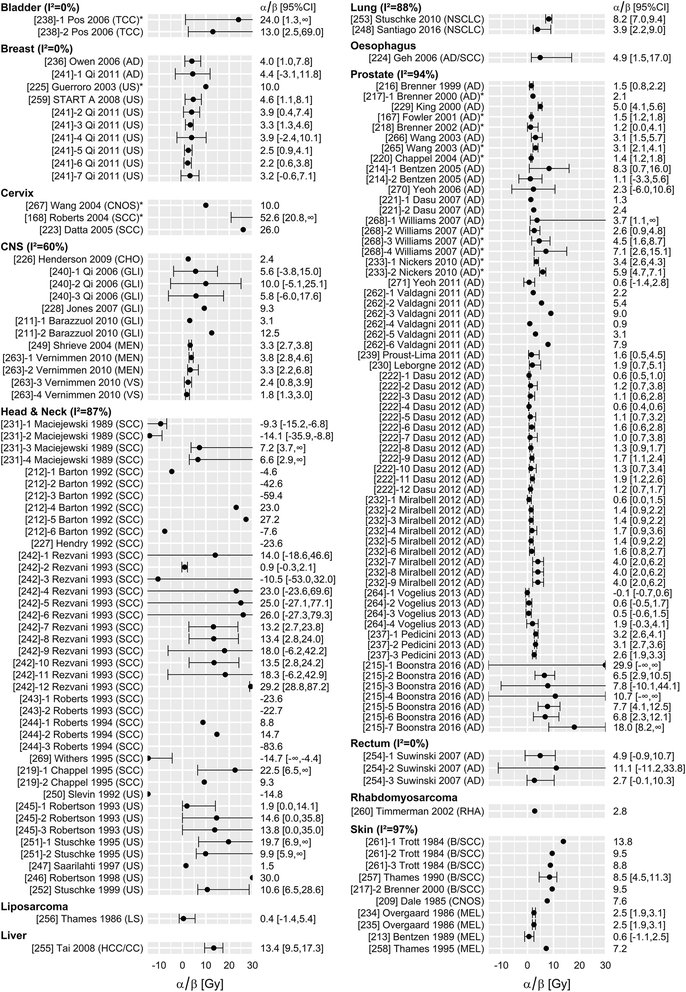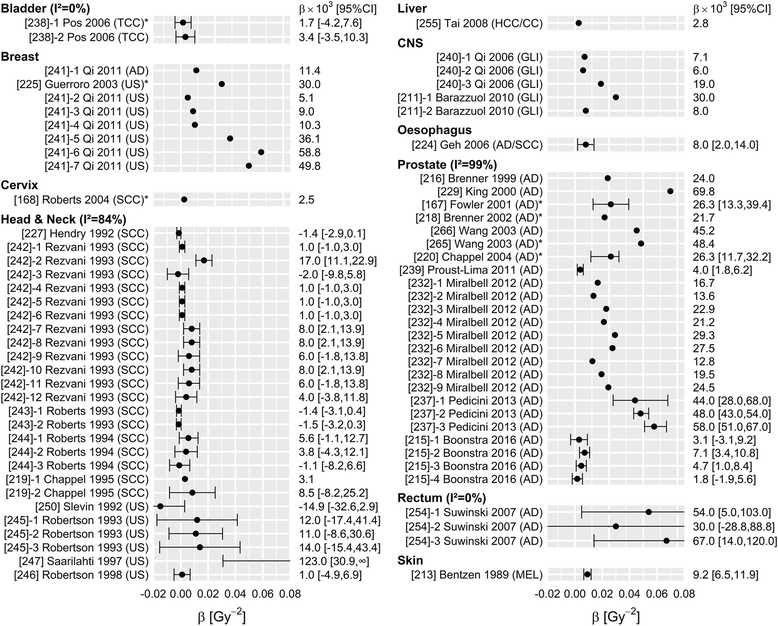The alfa and beta of tumours: a review of parameters of the linear-quadratic model, derived from clinical radiotherapy studies
- PMID: 29769103
- PMCID: PMC5956964
- DOI: 10.1186/s13014-018-1040-z
The alfa and beta of tumours: a review of parameters of the linear-quadratic model, derived from clinical radiotherapy studies
Abstract
Background: Prediction of radiobiological response is a major challenge in radiotherapy. Of several radiobiological models, the linear-quadratic (LQ) model has been best validated by experimental and clinical data. Clinically, the LQ model is mainly used to estimate equivalent radiotherapy schedules (e.g. calculate the equivalent dose in 2 Gy fractions, EQD2), but increasingly also to predict tumour control probability (TCP) and normal tissue complication probability (NTCP) using logistic models. The selection of accurate LQ parameters α, β and α/β is pivotal for a reliable estimate of radiation response. The aim of this review is to provide an overview of published values for the LQ parameters of human tumours as a guideline for radiation oncologists and radiation researchers to select appropriate radiobiological parameter values for LQ modelling in clinical radiotherapy.
Methods and materials: We performed a systematic literature search and found sixty-four clinical studies reporting α, β and α/β for tumours. Tumour site, histology, stage, number of patients, type of LQ model, radiation type, TCP model, clinical endpoint and radiobiological parameter estimates were extracted. Next, we stratified by tumour site and by tumour histology. Study heterogeneity was expressed by the I2 statistic, i.e. the percentage of variance in reported values not explained by chance.
Results: A large heterogeneity in LQ parameters was found within and between studies (I2 > 75%). For the same tumour site, differences in histology partially explain differences in the LQ parameters: epithelial tumours have higher α/β values than adenocarcinomas. For tumour sites with different histologies, such as in oesophageal cancer, the α/β estimates correlate well with histology. However, many other factors contribute to the study heterogeneity of LQ parameters, e.g. tumour stage, type of LQ model, TCP model and clinical endpoint (i.e. survival, tumour control and biochemical control).
Conclusions: The value of LQ parameters for tumours as published in clinical radiotherapy studies depends on many clinical and methodological factors. Therefore, for clinical use of the LQ model, LQ parameters for tumour should be selected carefully, based on tumour site, histology and the applied LQ model. To account for uncertainties in LQ parameter estimates, exploring a range of values is recommended.
Keywords: Fractionation sensitivity; Radiosensitivity; Study heterogeneity; α/β ratio.
Conflict of interest statement
Ethics approval and consent to participate
Not applicable
Competing interests
The Authors declare that they have no competing interests.
Publisher’s Note
Springer Nature remains neutral with regard to jurisdictional claims in published maps and institutional affiliations.
Figures



References
-
- Bentzen SM, Joiner MC. The linear-quadratic approach in clinical practice. In: Joiner MC, van der Kogel A, editors. Basic Clin. Radiobiol. 4. London: Hodder Arnold; 2009. pp. 120–134.
Publication types
MeSH terms
Grants and funding
LinkOut - more resources
Full Text Sources
Other Literature Sources
Medical

